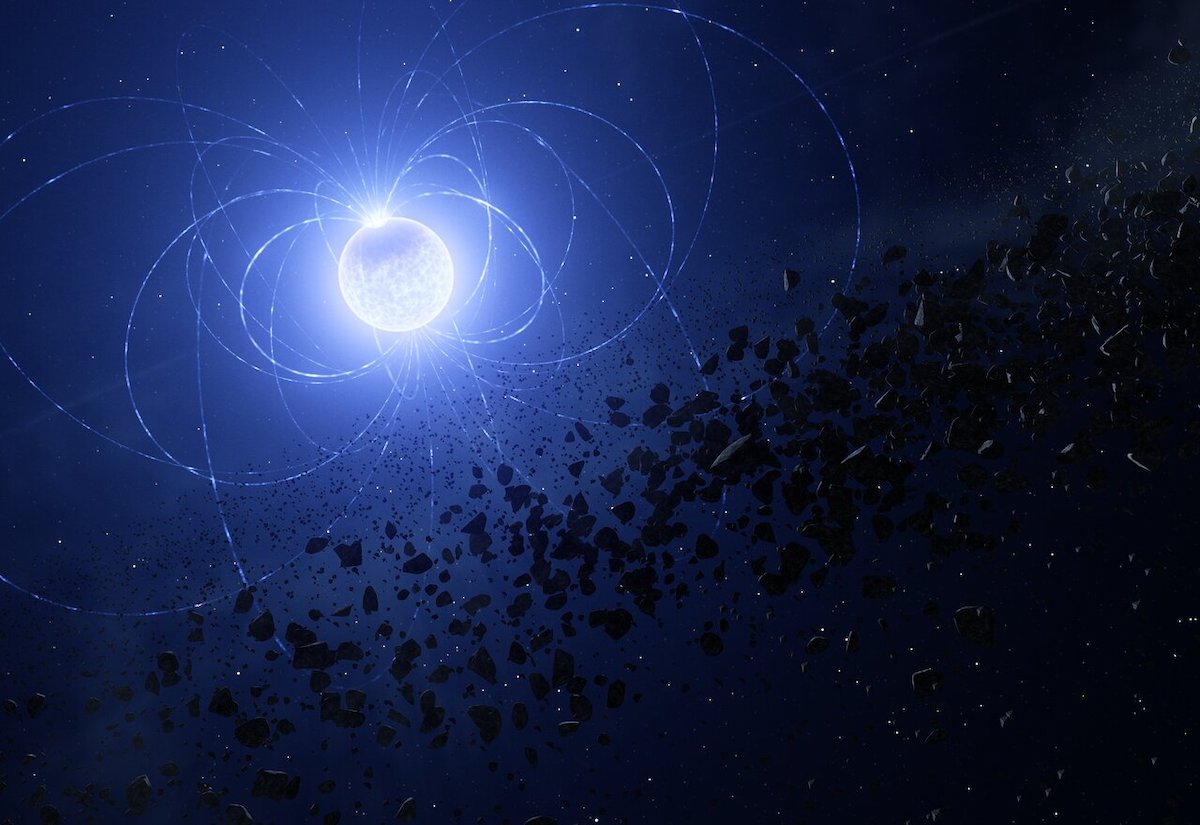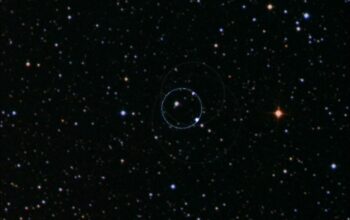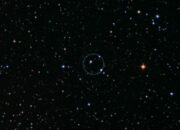The cosmos is a vast and complex tableau, teeming with celestial wonders that defy human comprehension. Among the most intriguing phenomena are the voracious behaviors exhibited by certain stars, particularly those characterized by their cannibalistic tendencies. The phenomenon of a star consuming its own planetary system is not merely the stuff of science fiction; it is grounded in astrophysical principles that warrant detailed exploration. This article delves into the implications and mechanisms underpinning the remarkable observation of a cannibal star devouring its planetary counterpart, shedding light on the broader cosmic implications of such events.
At the forefront of this cosmic drama is the star known to exhibit cannibalistic behavior. A cannibal star, in the context of stellar dynamics, is defined as a celestial body that ingests material from its surrounding environment, often including planets and other celestial bodies. The mechanisms behind this consumption are intricately linked to the star’s lifecycle, gravitational pull, and the evolutionary processes governing stellar formation and decay.
To comprehend the mechanics of such celestial voracity, it is crucial to understand the lifecycle of stars. Stars are born from massive clouds of gas and dust, which collapse under gravitational pull. Over millions of years, these protostars evolve; they burn their fuels, enter the main sequence phase, and eventually expand into red giants as they exhaust their nuclear fuel. It is during these later stages of stellar evolution that the propensity for cannibalism becomes particularly pronounced.
One prominent example of these stellar behemoths is found in red giants. As these stars expand, they can engulf neighboring celestial bodies, including their own planetary systems. The gravitational pull exerted by these aging stars can become so potent that they draw in adjacent planets. The disintegration of these planets, often observed in the form of tidal stripping, reveals the destructive potential of older stars. This process epitomizes the stunning cycle of birth and death in the universe, where stellar remnants contribute to the formation of future solar systems.
Astrophysicists have employed sophisticated models to illustrate how a star can cannibalize a planet. The conservation of angular momentum and gravitational interactions are at play in orchestrating the fate of planets that linger too close to their parent stars. For instance, as a red giant expands, its outer layers can reach out to capture orbiting bodies that cross a critical boundary known as the Roche limit. This delineation marks the threshold at which the gravitational forces of the star can overcome the structural integrity of the celestial body, leading to its disintegration.
The fallout of such cannibalistic acts is significant. When a star devours its planet, it not only alters its mass but also affects the chemical composition of its outer layers. Planetary materials can enrich the stellar atmosphere, leading to observable changes in spectral lines. Such changes provide astronomers with invaluable data, enabling them to analyze the interaction of stellar and planetary matter. This is pivotal in understanding the life cycles of stars and their residual contributions to the cosmic ecosystem.
Furthermore, the concept of cannibalism in the cosmos extends beyond mere consumption; it encapsulates a broader narrative regarding the evolution and interaction of celestial bodies within galaxies. Cannibal stars contribute to the recycling of materials in the universe, generating a diverse array of elements that may ultimately participate in the formation of new stars and planets. For example, the remnants of consumed planets and their constituent materials may become integrated into the star’s own elemental makeup, enriching the interstellar medium with heavier elements necessary for future planetary formation.
Moreover, recent observations of peculiar stellar behaviors have identified a category of stars that engage in “double cannibalism.” This phenomenon involves binary or multiple star systems where one star actively consumes the other. These dual interactions yield a complex dynamic that provides key insights into stellar evolution and the life cycle of star systems. The gravitational dance between stars in such configurations signals not only potential collisions and mergers but also serves as an essential mechanism for understanding the distribution of mass and energy in the universe.
The implications of these celestial discoveries extend into the realm of exoplanetary research as well. The study of cannibal stars raises critical questions about the fate of planets in their vicinity. What happens to a planet when its host star undergoes a transformation into a red giant? Will it be consumed, or might it survive to see the emergence of a new stellar generation? Such inquiries are pivotal for astrobiology, particularly in exploring the conditions necessary for habitable environments.
In conclusion, the phenomenon of cannibal stars consuming their planetary systems serves as a catalyst for deeper understanding of stellar dynamics, cosmic recycling, and the future of cosmic habitation. The interplay between stellar evolution and planetary destruction encapsulates a fascinating chapter in the annals of astrophysics. As researchers continue to unearth evidence of these captivating celestial behaviors, they illuminate the intricate relationships that bind stars, planets, and the very fabric of the universe together, painting a vivid picture of a cosmos in perpetual flux.










